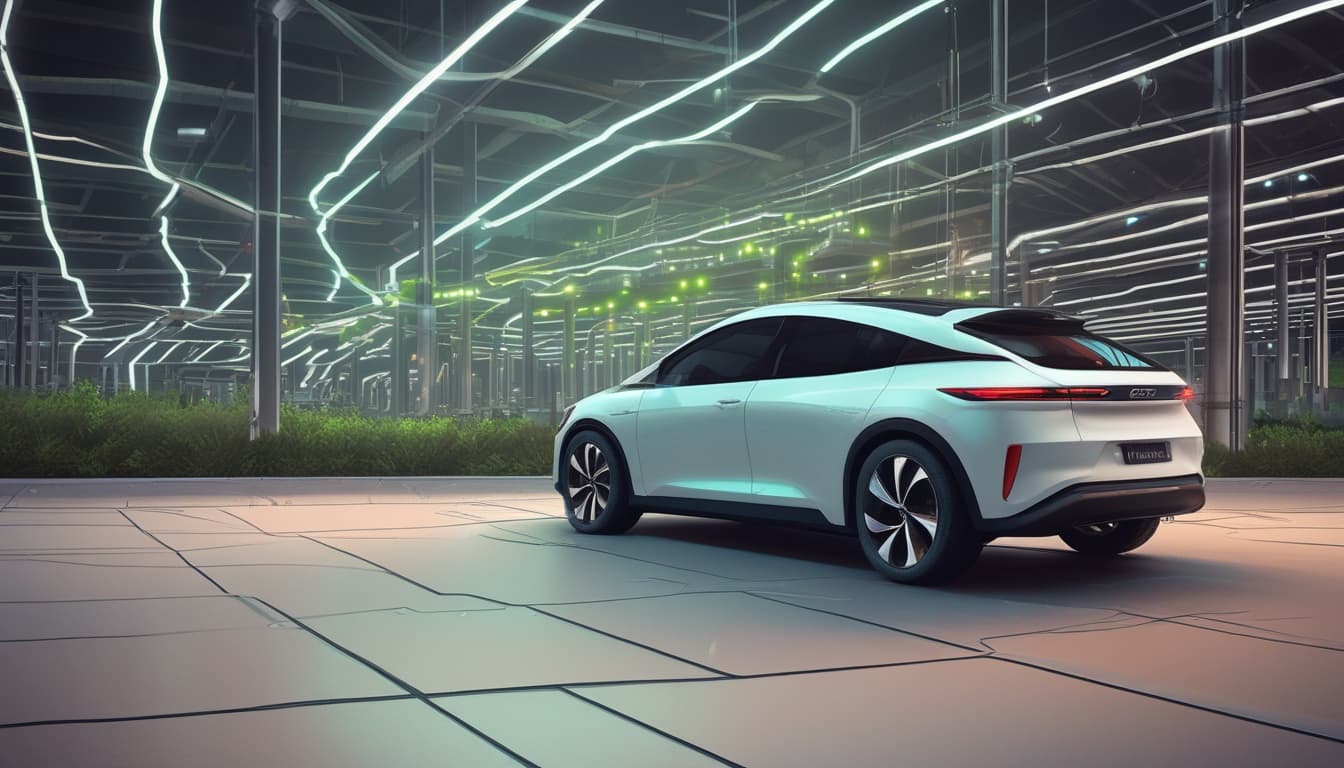The modern vehicle is rapidly evolving from a mere mode of transportation into an intelligent, perceptive environment. While much focus has been placed on how cars perceive the world outside, an equally significant revolution is happening within the cabin. Advanced sensing technologies are increasingly turning their attention inward, monitoring the driver and occupants with unprecedented detail. This shift towards in-cabin awareness is not just about adding novel features; it's fundamentally reshaping vehicle safety protocols, enhancing user experience through deep personalization, and paving the way for the next generations of driver assistance and autonomous driving systems. Understanding this internal gaze is crucial to grasping the future trajectory of the automotive industry.

The Evolution of In-Cabin Awareness
The concept of a car sensing its occupants isn't entirely new, but the sophistication and purpose have dramatically changed over time. Early systems were rudimentary, focused on basic safety compliance and functionality.
Early Days: Basic Occupant Detection
Initial forms of in-cabin sensing were primarily passive and mechanical. Think of the simple weight sensors in seats designed to detect occupant presence for airbag deployment logic or seatbelt reminder systems. These sensors served critical safety functions but offered minimal insight into the occupants' state or behaviour. They answered the basic question of if someone was there, but not who they were or how they were doing. This foundational layer, while simple, set the stage for more complex systems by establishing the principle of the vehicle needing information about its internal state.
The Rise of Driver Monitoring Systems (DMS)
Driven largely by safety initiatives and regulations, particularly mandates from organizations like Euro NCAP aiming to combat distracted and drowsy driving, Driver Monitoring Systems (DMS) emerged as a critical technology. Early DMS focused on inferring driver state through steering wheel inputs or pedal activity, but modern systems primarily rely on camera-based technology. Using infrared cameras, often mounted on the steering column or dashboard, these systems track eye movements (gaze direction, blink rate, eyelid closure) and head pose. Advanced algorithms analyze these inputs to detect signs of drowsiness, distraction (e.g., phone use, looking away from the road), and potentially even impairment. The integration of DMS is becoming increasingly crucial for the effective operation of advanced driver-assistance systems (ADAS), providing critical information about the driver's readiness to intervene.
Key Technologies Powering In-Cabin Sensing
A confluence of hardware and software advancements enables the rich sensing capabilities found in modern vehicles. Different sensor modalities offer unique advantages and are often combined for robust performance.
Camera-Based Systems (Visible Light & Infrared)
Cameras are the workhorses of many in-cabin sensing applications, particularly DMS. Infrared (IR) cameras are favoured for driver monitoring because they work reliably in varying light conditions, including darkness, and can 'see' through many types of sunglasses. These cameras capture detailed information about the driver's face, enabling analysis of eye gaze, blink patterns, head position, and even facial expressions linked to emotional state or drowsiness. Visible light cameras may also be used, sometimes integrated into the rearview mirror, for broader cabin monitoring, occupant identification, or enabling features like in-car video conferencing. Challenges include potential occlusions (e.g., face masks), variations in appearance across diverse populations, and inherent privacy concerns associated with image capture.

Radar Systems
Interior radar sensing is gaining significant traction due to its ability to detect presence and movement without relying on visual line-of-sight and being inherently more privacy-preserving than cameras. Typically operating in the 60GHz frequency band, short-range radar can detect occupants anywhere in the cabin, including children or pets potentially hidden from view or covered by a blanket. This is critical for Child Presence Detection (CPD) systems, aimed at preventing tragic hot-car incidents. Furthermore, radar's sensitivity allows for the detection of micro-movements associated with breathing and heartbeats, enabling contactless monitoring of vital signs for health and wellness applications. Radar performs well regardless of lighting conditions and isn't easily fooled by inanimate objects.
Sensor Fusion and AI
The true power of modern in-cabin sensing lies in combining data from multiple sources (cameras, radar, microphones, environmental sensors, potentially even biometric sensors) through sensor fusion. Algorithms, increasingly powered by Artificial Intelligence (AI) and machine learning, process this multi-modal data stream to build a comprehensive understanding of the cabin environment and occupant states. AI excels at identifying complex patterns indicative of drowsiness, distraction, distress, or specific activities. This intelligent interpretation is fundamental, transforming raw sensor data into actionable insights that enhance safety and enable sophisticated features. The role of AI in transforming the driving experience is profoundly amplified by these rich in-cabin data streams.
Expanding Capabilities: Beyond Driver Monitoring
While DMS was the initial catalyst, in-cabin sensing technology is rapidly expanding its scope to encompass all occupants and enable a wider range of applications focused on safety, comfort, and personalization.
Occupant Monitoring Systems (OMS)
OMS extends sensing capabilities to the entire cabin. This includes detecting the number, location, and posture of all occupants. This information can be used to optimize airbag deployment force and direction based on occupant size and position, ensure rear passengers are wearing seatbelts, and implement advanced Child Presence Detection systems mandated by upcoming regulations. OMS contributes significantly to overall vehicle safety by providing a holistic view of the internal cabin state during normal driving and critical events.
Health, Wellness, and Wellbeing (HWW)
An emerging frontier is the use of in-cabin sensors for Health, Wellness, and Wellbeing (HWW) applications. Contactless monitoring of vital signs like heart rate and respiration rate via radar or camera-based analysis of skin colour changes (photoplethysmography) opens possibilities for detecting driver fatigue or even potential medical emergencies like a heart attack or seizure. Systems could proactively suggest taking a break, adjust cabin climate or lighting to reduce stress, or even alert emergency services in critical situations. This moves the vehicle towards being a proactive guardian of occupant health.
Enhanced Personalization and User Experience
Recognizing specific occupants allows for unprecedented levels of personalization. Once identified (via facial recognition, voiceprint, or even gait analysis as they approach the car), the vehicle can automatically adjust settings like seat position, mirrors, steering wheel height, climate control preferences, favourite infotainment options, and ambient lighting. This creates a seamless and welcoming experience tailored to each individual. This deep level of customization is a key aspect of the trend towards hyper-personalized in-car environments, making the vehicle feel like a truly personal space.

Challenges and Considerations
Despite the immense potential, the widespread adoption of advanced in-cabin sensing technologies faces significant hurdles that need careful consideration by manufacturers, regulators, and consumers.
Privacy Concerns
Perhaps the most significant challenge is privacy. Cameras and microphones constantly monitoring occupants raise legitimate concerns about data collection, storage, usage, and potential misuse. Who owns the data? Where is it processed (in-vehicle vs. cloud)? How is it secured against unauthorized access? Manufacturers must be transparent about data practices, implement robust security measures (encryption, anonymization where possible), and provide users with clear control over their data. Addressing these privacy concerns effectively is paramount for consumer acceptance and requires robust cybersecurity measures for connected vehicles.
Accuracy and Reliability
For safety-critical applications like DMS or vital signs monitoring, accuracy and reliability are non-negotiable. Systems must perform robustly across a diverse range of users (different ages, ethnicities, appearances), under varying environmental conditions (lighting, temperature), and despite potential occlusions (sunglasses, masks, shadows). False positives (e.g., wrongly identifying a driver as drowsy) can be annoying, while false negatives (failing to detect a critical situation) can be dangerous. Extensive testing and validation are required to ensure these systems are dependable in real-world scenarios.
Cost and Integration Complexity
Implementing sophisticated multi-sensor systems with the necessary processing power adds cost and complexity to vehicle manufacturing. Integrating cameras, radar units, control modules, and associated wiring harnesses seamlessly into the vehicle architecture, while ensuring electromagnetic compatibility and durability, presents engineering challenges. Balancing performance and features against cost constraints is a constant challenge for automakers, especially in more price-sensitive vehicle segments.
Regulatory Landscape
While regulations like those from Euro NCAP are driving adoption of DMS and CPD, the broader regulatory landscape for in-cabin sensing, particularly concerning OMS, HWW applications, and data privacy, is still evolving. Standardization of performance metrics, testing protocols, and data handling practices will be crucial for ensuring consistent safety benefits and building public trust. International harmonization of these regulations will also be important for global automakers.
The Future of In-Cabin Sensing
The trajectory of in-cabin sensing points towards increasingly integrated, intelligent, and proactive systems that fundamentally alter our relationship with vehicles.
Seamless Integration with Autonomous Driving
Robust driver and occupant monitoring is not just a feature but a prerequisite for safe deployment of higher levels of driving automation (SAE Level 3 and above). These systems need to reliably determine if a driver is present, alert, and ready to take back control when the automated system requests it. OMS will ensure the system understands the state of all occupants before making complex driving decisions. As vehicles become more autonomous, the focus of monitoring may shift from driver readiness to occupant comfort, entertainment, and productivity.
Predictive and Proactive Systems
Future systems will move beyond simply reacting to current states towards predicting needs and potential issues. By analyzing trends in vital signs, driving behaviour, and even subtle facial expressions or voice tone, vehicles might anticipate fatigue before it becomes critical, detect early signs of illness, or proactively adjust the environment to maintain optimal alertness or comfort. This predictive capability could significantly enhance both safety and the overall travel experience.
The Sentient Cabin
Ultimately, in-cabin sensing is driving towards the concept of a 'sentient cabin' – an environment that possesses a deep, contextual understanding of its occupants' identities, states, needs, and even intentions. This future cabin will seamlessly adapt lighting, climate, audio, and information displays, manage transitions between manual and automated driving, and provide proactive support for safety, wellness, and productivity. The car will transform from a tool we operate into an intelligent partner that actively anticipates and caters to our needs during every journey.

Conclusion
In-cabin sensing technology represents a paradigm shift in automotive design, moving the vehicle's focus inward to understand and interact with its occupants on an unprecedented level. Driven by safety regulations, the pursuit of enhanced user experiences, and the requirements of autonomous driving, technologies like DMS, OMS, radar, and AI-powered sensor fusion are rapidly becoming integral components of modern vehicles. While significant challenges remain, particularly concerning privacy, accuracy, and cost, the potential benefits for safety, comfort, personalization, and health monitoring are immense.
The journey towards the vigilant, sentient cabin is well underway, promising a future where our vehicles are not just modes of transport, but perceptive, protective, and personalized environments. As this technology continues to evolve, ongoing dialogue between manufacturers, regulators, and the public will be crucial to navigate the ethical considerations and ensure these powerful capabilities are deployed responsibly.
What are your thoughts on the balance between the safety and convenience offered by in-cabin monitoring and the associated privacy concerns? Share your views in the discussion below.





